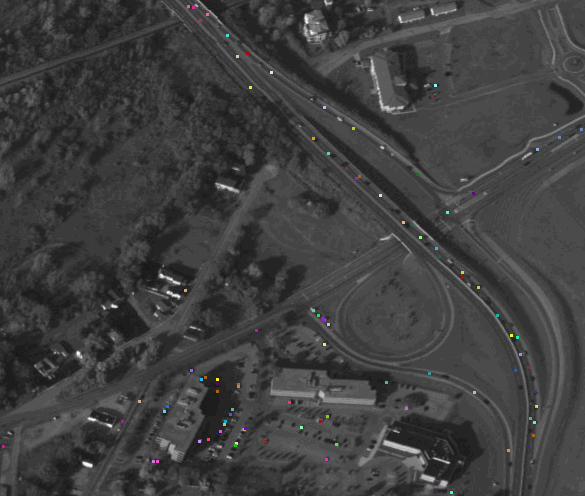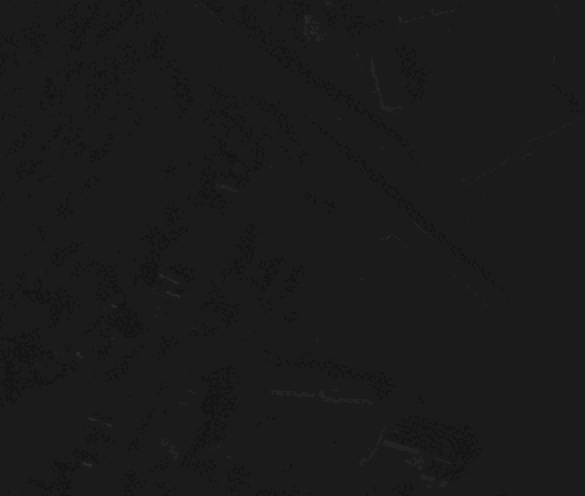This code was used to produce the results shown in:
C. Aguilar, M. Ortner and J. Zerubia, "Adaptive Birth for the GLMB Filter for object tracking in satellite videos," 2022 IEEE 32st International Workshop on Machine Learning for Signal Processing (MLSP), 2022, pp. 1-6, doi: "
If you use this code, we strongly suggest you cite:
@inproceedings{aguilar2022,
author = {Aguilar, Camilo and Ortner, Mathias and Zerubia, Josiane},
title = {Adaptive Birth for the GLMB Filter for object tracking in satellite videos},
booktitle = {2022 IEEE 32nd International Workshop on Machine Learning for Signal Processing (MLSP)},
pages={1-6},
doi={},
Year = {2022}
}
| Tracked Objects | Adaptive Birth Field |
|---|---|
 |
 |
- Clone the repository
git clone --recursive https://github.com/Ayana-Inria/GLMB-adaptive-birth-satellite-videos- To install required dependencies run:
$ conda env create -f ab_glmb.ymlRequired libraries
- numpy=1.22
- pytorch=1.12
- opencv=4.5
- pillow=9.0
- matplotlib=3.5
- motmetrics=1.2To run the demo
python demo.pyDemo outputs are saved under:
[root directory]/dataset/WPAFB_2009/AOI_02/FILTER_OUTPUT/
The GLMB filter relies on numerous parameters, but the most important ones are:
# parameters.py
parameters['tau'] = 1 # Sampling period
parameters['Q'] = 10 # Motion covariance
parameters['R'] = 1 # Measurement covariance
parameters['Po'] = 5 # Birth covarianceAll the essential functions for our filter are located at the src/filter/glmb.py file:
# python 3.6
import src.filter.glmb as GLMB_FILTER
# Fix filter parameters
parameters = {}
parameters['tau'] = 1 # Sampling period
parameters['Q'] = 10 # Motion covariance
parameters['R'] = 1 # Measurement covariance
parameters['Po'] = 5 # Birth covariance
# Initialize Filter Model
model = GLMB_FILTER.Model(parameters)
# Create instance of GLMB
glmb_update = GLMB_FILTER.glmb_instance()
# Create birth field
birth_field = torch.zeros((data_rows, data_cols, 3))
# Create state list
X = []
# Iterate over each frame
# get frame detections
zk = get_frame_detections(frame_number) # torch tensor with shape (n_objects_at_frame_k, n_dims). n_dims=4: [px, py, w, h]
# Update GLMB
glmb_update = GLMB_FILTER.jointpredictupdate_a_birth(glmb_update, model, zk, birth_field, frame_number)
# State Estimation
Xk = glmb_update.extract_estimates() # Xk is a dictionary of the form Xk[obj_label] = [px, py, vx, vy, w, h]
# Add frame state to state list
X.append(Xk)
# Update birth field
birth_field = update_birth_field(birth_field, X, frame_number)
- Download the WPAFB 2009 dataset from the AFRL's Sensor Data Management System (SDMS) website
- Convert the .ntf files to .png (we used Matlab's nitfread function)
- Use our video stabilization repository to stabilize the sequence and format the labeling
To replicate the results shown in the paper, the DATASET needs to be formatted in the following way:
[root for demo.py]
└──dataset
└── WPAFB_2009/
└── AOI_02/
├── INPUT_DATA/
| ├── img01.png
| ├── img02.png
| └── ...
├── GT/
| ├── stabilized_oject_states.csv
| └── labels/
| ├── labels_as_points_01.png
| ├── labels_as_points_02.png
| └── ...
└── FILTER_OUTPUT/
├── birth_field/
| ├── birth_field_01.png
| ├── birth_field_02.png
| └── ...
├── objects/
| ├── tracked_objects_01.png
| ├── tracked_objects_02.png
| └── ...
├── labels/
| ├── labels_as_points_01.png
| ├── labels_as_points_02.png
| └── ...
└── object_states.csv
Thanks to BPI France (LiChiE contract) for funding this research work, and to the OPAL infrastructure from Université Côte d'Azur for providing computational resources and support.
GLMB with adaptive birth is released under the GNUv3 License (refer to the LICENSE file for details).